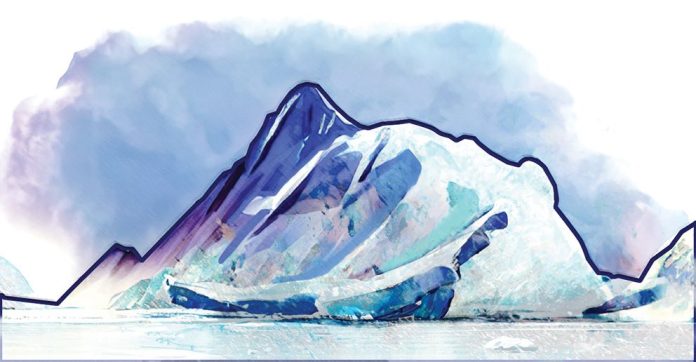A 2024 study published in Science has revealed a significant geological event that occurred in Greenland’s Dickson Fjord, where standing waves led to a rockslide that triggered a mega-tsunami reaching heights of 650 feet, one of the tallest ever recorded. This extraordinary tsunami persisted for nine days, following a landslide that deposited 25 million cubic meters of rock and ice into the fjord.
During the event, seismometers detected unusual vibrations that produced a continuous hum, unlike the typical sounds associated with earthquakes. This long-duration seismic activity puzzled geologists, with Stephen Hicks, a seismologist at University College London, describing it as “completely unprecedented.” After tracing the seismic signals to Greenland with the help of Danish seismologists, an international team of 68 scientists collaborated with the Danish Navy to analyze satellite imagery, ground evidence, and seismic data to uncover the cause of these vibrations.
The investigation revealed that the melting of a glacier at the base of a nearly 4,000-foot mountain destabilized the mountainside, leading to the landslide. The resultant waves trapped in the fjord oscillated rhythmically every 90 seconds, eventually diminishing to heights of seven meters within a few minutes, then further decreasing to just a few centimeters in subsequent days. This phenomenon is classified as a seiche, which describes water oscillating in an enclosed space. However, unlike previous seiches, this event shocked researchers with its extraordinary duration, leading Kristian Svennevig, another study author, to note that a nine-day persistence of a seiche would have seemed impossible just a year prior.
No injuries or fatalities were reported from the tsunami, but it did wash away a cultural heritage site and an empty military base. The fjord is a known route for cruise ships, highlighting potential risks for maritime activities in the area. Interestingly, researchers also found evidence of at least four previous smaller landslides, as well as one that occurred after the mega-tsunami.
The root cause of this landslide is closely linked to climate change, specifically the melting glaciers that once supported the mountain’s rock and ice. This climate-induced destabilization is increasingly making polar regions susceptible to large landslides, according to the study. While this is the first recorded landslide tsunami in East Greenland, scientists anticipate that similar events will occur more frequently and at larger scales due to the continued melting of glaciers and permafrost on steep slopes in the Arctic.
Anne Mangeney, a landslide modeller at the Institut de Physique du Globe de Paris, emphasized the global implications of the event, noting how the vibrations generated by the landslide traveled from Greenland to Antarctica in under an hour. This demonstrates the far-reaching impacts of climate change, affecting regions worldwide within a remarkably short timeframe.















